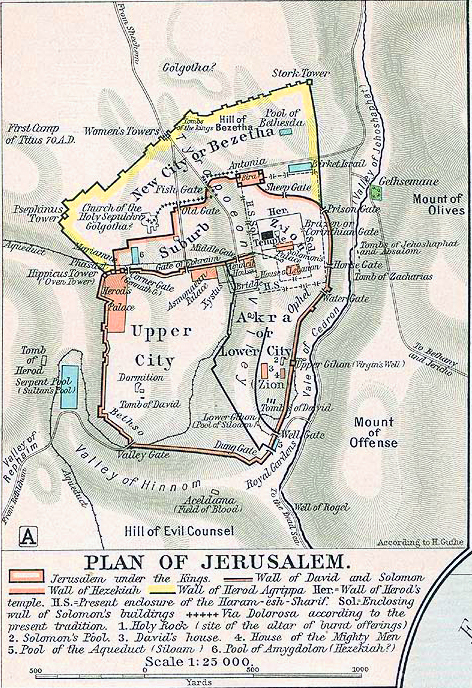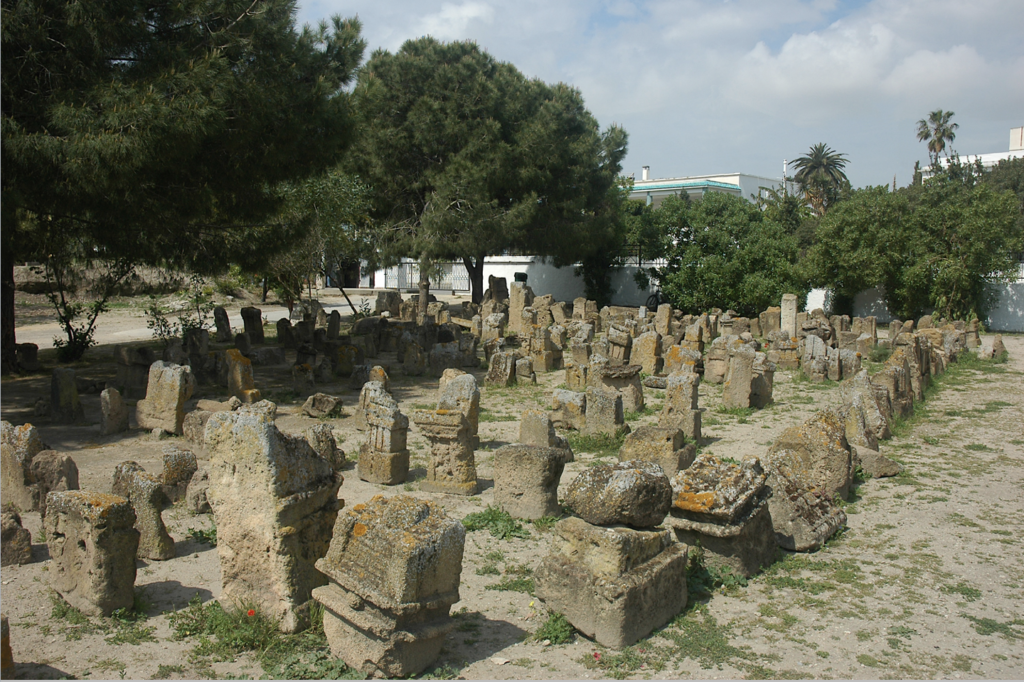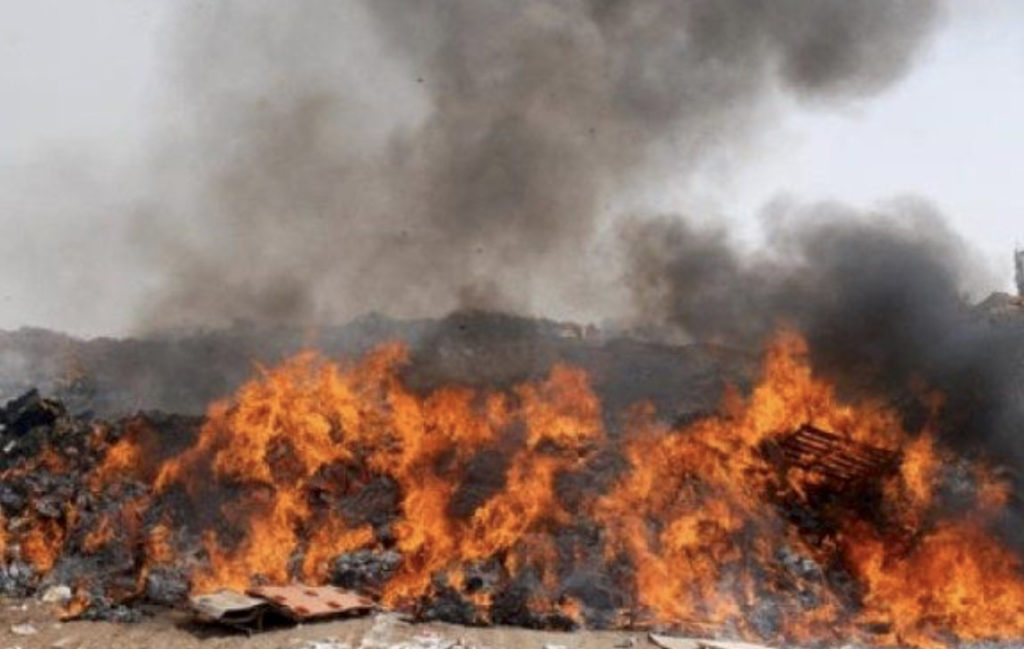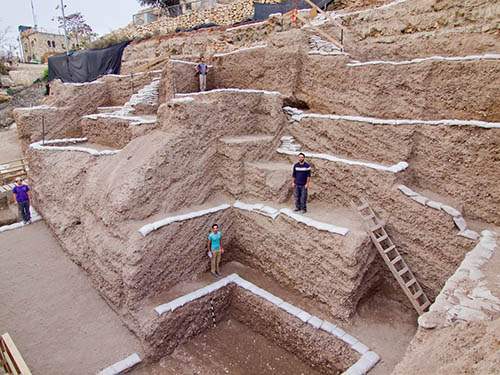
By Patrick Hunt –
Gehenna is an old Hebrew toponym (place name) that began as a literal, physical location – the Valley of Hinnom – and gradually transformed into a metaphor for hell through various processes including religious defilement. One of the immediate problems of any hermeneutics about Gehenna is the religious literariness of the narrative texts and subsequent metaphorical language therein right up tho the Roman period rather than the verifiable knowledge of what can be documented as having happened in an otherwise known topographic place.
As mentioned in Hebrew biblical texts, this valley just south of ancient Jerusalem was carved by a stream that joined the Cordon Valley. Today the valley marks the limits of Old Jerusalem outside the late medieval Suleimanic Wall – itself roughly paralleling older walls from the Iron Age the first millennium BCE into Roman times – surrounding Mt. Zion, its southeastern confluence with the south running Kidron Valley is near where the Tyropoean Valley (or Maqtesh) descends out of the summit of Old Jerusalem and also where the Kidron had continued southerly under the Ophel or Hill of David. Perhaps ironically, the depth of the Hinnom Valley, so accursed in literature, is immediately adjacent to the blessed context of the height of Mt. Zion. This polarity of sublime blessed height to terrible depth has not been missed by commentators. While some dispute, however, the exact location of its defiling activity of child sacrifice or that such even occurred, all agree the Hinnom Valley was immediately south of Old Jeruslaem’s walls. Notice on the generalized 219th c. map below that the Hinnom Valley runs eastward south of the city walls.

Named after the Son of Hinnom, the Valley Ben-Hinnom (×’ÖµÖ¼×™ ×‘Ö¶×ŸÖ¾×”Ö´× Ö¹Ö¼×) is first mentioned in Joshua 15 circumscribing the boundary of the tree of Judah near the then-Canaanite fortress of Jebus that would become the core of the site of the city of Jerusalem:
“Then it ran up the Valley of Ben Hinnom along the southern slope of the Jebusite city. From there it climbed to the top of the hill west of the Hinnom Valley.†[NIV]
The Jebusites were apparently conquered in the Davidic period (most likely 11th c. BCE) and Jebus on the Ophel became Jerusalem during the time of David. Political prescience is involved in the choice of the capital of Israel for several reasons: First, Jerusalem was located in the small tribe of Benjamin, which served as a buffer state between the two powerful tribes of Ephraim to the north and Judah to the south, both of which jockeyed for supremacy in Israel.[1] Second, trade routes from east to west converged here from to the Mediterranean coast, so this location for a capital was pragmatic. At the time of conquest, the Hinnom Valley was unimportant other than as a boundary marker.
According to Jeremiah 7:30-33, the eternal curse on the Hinnom Valley is due to Judahite idolatry around the 8th-7th c. BCE borrowed from Canaanite and Phoenician religion and connected to the attendant human sacrifice that purportedly occurred there in what is usually called a Tophet or funerary sanctuary to the gods Tanit and Ba’al as her consort, as found in Phoenician-Punic Carthage Phoenician Motya off Sicily and Tharros in Sardinia, among others, [2] although this human sacrificial designation is also often disputed as merely a circular argument from biblical sources. As Jeremiah 7:30-33 relates:
30 “…They have set up their detestable idols in the house that bears my Name and have defiled it. 31 They have built the high places of Tophet (תוֹפֶת) in the Valley of Ben Hinnom to burn their sons and daughters in the fire—something I did not command, nor did it enter my mind. 32 So beware, the days are coming, declares the Lord, when people will no longer call it Tophet (תוֹפֶת) or the Valley of Ben Hinnom, but the Valley of Slaughter, for they will bury the dead in Tophet until there is no more room. 33 Then the carcasses of this people will become food for the birds and the wild animals, and there will be no one to frighten them away.†[NIV]

The word tophet (Hebrew feminine singular) itself is a funerary word as a cognate of other similar Indo-European words, among them taphos as “grave” in Greek, hence the modern word “epitaph†(from epi + taphos) for a grave marker inscription. Archaeology refers to the general study of grave contexts and things found – grave goods – therein as Taphonomics.
As mentioned, the most famous – or infamous – Tophet is that of the sacred precinct of Tanit in Carthage, excavated in the 1980’s by Harvard Semitic Museum under Lawrence Stager and Sam Wolff, [3] also visited and researched by this author funded by National Geographic for his Hannibal book.[4] Their findings are controversial because not all agree it was a locus of normative infant sacrifice. Nevertheless, the practice was also documented, however propagandistically, by Diodorus Siculus (1st c. BCE) where among other details he describes the quantities of children sacrificed by the general populace in his Bibliotheke Historia XX.6-7.[5] At the Carthage Tophet, at least 3000 burial urns of children and animal ash and bones are documented over hundreds of years through multiple strata. [6] Naturally this is a contentious subject and some scholars disagree with both the premise of child sacrifice and/or that it might ever have been normative behavior in Carthage. [7] Again, see author’s notes in Hannibal, pp. 9 and 277 for longer discussion. On the other hand, David Soren et al. document that even after 146 BCE when Rome conquered Carthage that the “ancient rites of child sacrifice continued in the hinterland right into late antiquity, although offerings such as the first fruits of the season, birds, and animals such as rams or goats were more common.” [8]

Israelite religion forbade sacrifice to Molech, the “ruler (מֹלֶךְ) [of live sacrifice]†as seen in Leviticus 18:21 and elsewhere:
“And thou shalt not let any of thy seed pass through the fire to Molech (מֹלֶךְ), neither shalt thou profane the name of thy God: I am the LORD.”
Other Hebrew scriptures such as II Kings 23:10 continues this description in the reforms of King Josiah:
“And he defiled Tophet (תוֹפֶת), which is in the valley of the children of HinnomH, that no man might make his son or his daughter to pass through the fire to Molech (מֹלֶךְ).â€
Jeremiah 32:35 provides additional detail:
“And they built the high places of Ba’al, which are in the valley of the son of Hinnom, to cause their sons and their daughters to pass through the fire unto Molech (מֹלֶךְ) which I commanded them not, neither came it into my mind, that they should do this abomination, to cause Judah to sin.”
Thus, Molech as used in the biblical texts is generally suggested as a title for Ba’al and/or his consort Tanit as the “ruler†(מֹלֶךְ Molech) [of live sacrifice].â€
Judaism’s mixed record of the Hinnom Valley as a tophet notwithstanding, its notoriety accrued through the attested connection with King Manasseh, Hezekiah’s son, who was said to cause his children to pass through the fire ostensibly there in II Kings 21:6 and amplified in II Chronicles 33:6 to include the exact location as the Hinnom Valley:
“And he made his son to pass through the fire…†“He also made his children to pass through the fire in the valley of the son of Hinnom (×’Öµ×™ בֶן-×”Ö´× Ö¹Ö¼×).â€
So nearly every subsequent mention of the Valley of Hinnom makes it clear that it was the locus of apparent human sacrifice to foreign (= false) gods in Hebrew religious perception, and was thus accursed because of this abominable practice.
Because the subsequent Aramaization of Ge-Hinnom (×’ÖµÖ¼×™Ö¾×”Ö´× Ö¹Ö¼×) becomes Gehenna and also because the Septuagint and Hellenization of Gehenna becomes ΓÎεννα in Koine Greek, this latter Greek word is used multiple times in the New Testament Gospels, especially in the narratives of Jesus.
For example, seven passages in Matthew (5:22, 29, 30; 10:28; 18:9; 23:15; 23:33), three in Mark (9:43, 45, 47) and one in Luke (12:5) all mention Gehenna (ΓÎεννα in Greek) as a place of torment and perishing. Matthew 10:28 mentions Gehenna (ΓÎεννα in Greek) as a place of destruction for both body and soul and Mark 9:43 identifies hot as a topos of “unquenchable fire”. How much of the polemic of Jesus is metaphor and how much is a description of “Hell” is impossible to ascertain. It has been duly noted that the multiplicity of explicit mentions of Gehenna by Jesus make it seem like a real place and not merely a figurative idea or metaphor.

Nonetheless, despite the details of II Kings 21 & 23 and II Chronicles 33 noting Manasseh’s sins and Josiah’s reforms and the judgments of Jeremiah (chs. 7, 32 ) the archaeological evidence for the Hinnom Valley as a topos for a Molech shrine of child sacrifice – or a perpetually-burning trash dump in the time of Jesus – is so scanty as to be unverifiable to date. It should be noted, however, as some have, that Josiah’s reforms purportedly would have desecrated the Molech shrines and thus any such evidence might have been destroyed at this time. Whether the Hinnom Valley was used in Roman times as a trash dump with smoking embers – and thus a literal suggestion by Jesus – remains elusive. Despite long but sporadic Rabbinic tradition (Rabbi Yohanan ben Zakkai, Rabbi Jeremiah ben Eleazar, among others) and extended commentary for apocryphal Book of Enoch xxvii.1 as noted in the Jewish Encyclopedia where Gehenna, and possibly by extension the accursed Hinnom Valley, became “a figurative equivalent for hell” [9] and specifically Rabbi David Kimhi claiming a trash dump in the Hinnom Valley, Lloyd Bailey states that “There is no evidence that the valley was, in fact, a garbage dump…” [10] Trash dumps for burning by fire in Jerusalem would be logical south, east and southeast of the city where acrid smoke would blow away from occupation areas. A contemporary 1st c. BCE to 1st c. CE Roman trash dump can be seen to the east in the Kidron valley with many accumulated strata of compacted refuse material. [11]

In conclusion, since millennia of alluviation and modern redevelopment in the vicinity has made the Hinnom Valley increasingly difficult to pinpoint any such locus for the kind of activity II Kings, II Chronicles and Jeremiah narrate, complicated by the lack of physical evidence for a Roman period trash dump there to date, the words of Jesus must be at this point figurative. It cannot be fully ruled out that Jesus was describing a real place. Perhaps extended future archaeological research will yet locate a Hinnom Valley trash dump whose “unquenchable fire” was known and its acrid smoke seen and smelled by Jerusalemites of the Roman period including Jesus who referenced an accursed place to avoid if at all possible.
Notes:
[1] James Flanagan. “The Relocation of the Davidic Capital.†Journal of the American Academy of Religion 47.21979, 223-44.
[2] other Phoenician Tanit sanctuaries or tophets are found at Sulcis, Bithia, and Nora, all on Sardinia.
[3] Richard Clifford. “Phoenician Religion” in Bulletin of the American Society of Oriental Religion (BASOR) 279 (1990) 55-64; Lawrence E. Stager, “The Rite of Child Sacrifice at Carthage”, in J. G. Pedley, New Light on Ancient Carthage, University of Michigan Press, 1990, 1-11; L. E. Stager, “A View from the Tophet” in Phönizer im Westen, Philip von Zabern, 1982, 155-66.
[4] Patrick Hunt. Hannibal, New York: Simon and Schuster, 2017, Ch. 1, 9-10, endnote 12, pp. 276-7
[5] Bibliotheke Historia XX.6-7 (Library of History: “…In their zeal to make amends for their omission, they selected two hundred of the noblest children and sacrificed them publicly; and others who were under suspicion sacrificed themselves voluntarily, in number not less than three hundred.”
[6] L. Stager and S. Wolff. “Child sacrifice at Carthage: Religious Rite for Population Control?” Biblical Archaeology Review 10 (1984) 30-51. Co-author Sam Wolff confirmed in London at the Institute of Archaeology (pers. comm.) that they only excavated 10% of the Tanit Sanctuary Tophet and suggested that this limited number of 3000 urns with multiple burnt burials could exceed an exponential number of burials – up to 30,000? – if the full precinct were to be excavated.
[7] Jeffrey Schwartz, Frank Houghton, Roberto Machiarelli and Luca Bondioli. “Skeletal Remains from Punic Carthage Do Not Support Systematic Sacrifice of Infants.” PLoS (Public Library of Science) 5, number 2, (February 17, 2010) e9177.
[8] David Soren, Aicha Ben Abed Ben Khader, Hedi Slim. Carthage; Uncovering the Mysteries and Splendors of Ancient Tunisia. New York: Simon and Schuster, 1990, 236.
[9] Kaufmann Kohler and Ludwig Blau, “Gehenna” in the Jewish Encyclopedia (1906 edition). (http://www.jewishencyclopedia.com/articles/6558-gehenna)
[10] Lloyd R. Bailley. “The Topography of Hell,” Biblical Archeologist (1986) 187-91, esp. 189.
[11] Yuval Gadot. “Jerusalem and the Holy Land[fill]”. Biblical Archaeology Review, Jan/Feb 2018; Megan Sauter. “Taking Out the Trash in Ancient Jerusalem.” Bible History Daily (Online). January 9, 2018. BAS (Biblical Archaeology Society). While some debate the function of a trash dump, opining instead Roman destruction around 70 CE, the lack of anything beyond organic such as discarded metal or fragments of melted glass, etc., make a garbage dump most likely. (https://www.biblicalarchaeology.org/daily/ancient-cultures/daily-life-and-practice/garbage-archaeology-ancient-jerusalem/)